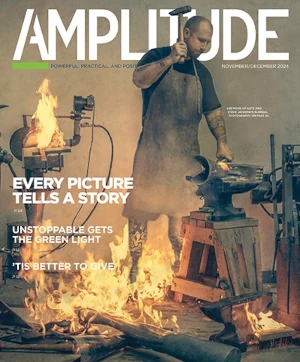By Sydney Marshburn

Last August, 11 months after losing my left leg above the knee, I found myself in Steamboat Springs, Colorado, participating in my first gravel cycling race, SBT GRVL. One year prior, I had been fighting for my life as an infection overtook my body.
Before amputation even became necessary, my doctors told me I would spend the rest of my life in a wheelchair, however long that was… and now I was in Steamboat Springs completing a 37-mile gravel race in the Rocky Mountains?! I still could barely walk, and I was surrounded by athletes who had dedicated their lives to mountain biking. As the imposter syndrome set in, I was left wondering, “Do I even deserve to be here?”
I never cycled competitively before SBT GRVL, but I have always been active. I was a competitive swimmer from nine years old until my senior year of high school. After my amputation at age 22, I promised myself that I would take advantage of every opportunity to get as active as possible, as soon as possible.
When I entered the race, I had only been walking on a prosthesis for a couple of weeks. I was still in the process of regaining my mobility and had not fully acclimated to life as an amputee. While training, I ran into one hurdle after another. Each challenge was followed by an even larger one. First we discovered that my microprocessor knee hit the back of my prosthesis with every turn of the pedals, damaging the technology inside the knee. My socket lost suction when I sat on a bike saddle, which kept causing my leg to fall off mid-ride. Two weeks before the race, my prosthetic team at Click Medical found a donated mechanical knee/foot setup, and their lab manager restitched an auxiliary belt so my socket would stay put while I was cycling.
Once the race began, I was surrounded by a team of supporters. They understood how badly I wanted to finish and did everything in their power to get me there. After getting caught in a lightning storm during the final 15 miles, I had a moment where I felt the crushing weight of the universe working against me. My residual limb was bleeding, I was in immense pain, and I wanted to quit. But my support team encouraged me to keep going. Because of their uplifting words and assistance, I was more determined than ever to complete the race.
I did it, and not a moment too soon: Just after I crossed the finish line, my prosthetic socket fell off entirely. The wave of accomplishment I felt at that moment echoed my broader limb-loss journey: Despite setbacks and moments of wanting to throw in the towel, I turned my perceived failures into knowledge, pushed through the pain, and regained my mobility.
People often believe there is something wrong with them if they struggle. But I’ve found that struggle is a necessary, and even helpful, part of adapting to limb loss. Accepting the inevitable failures as they come isn’t easy. At times I’ve felt as if I was suffocating under a blanket of uncertainty. But each failure has carried a lesson that advanced my recovery.
It’s now my job to help other amputees meet their own challenges. Earlier this year I became the events and outreach manager for the Range of Motion Project (ROMP), which promotes mobility and prosthetic care for underserved amputees in the United States and Latin America. One of my first projects is to encourage participation in ROMP’s annual Mobility May fundraiser. It’s a great opportunity for people to get active, challenge themselves, and focus on their own mobility every day this month. For each mile completed via walking, running, bicycling, or other means, participants can raise funds that will help another amputee increase their mobility, too.
Our goal is to move 30,000 miles and raise $30,000, which would fund 20 prostheses to restore mobility to amputees who would otherwise lack access. Taking part in the challenge is a great way to help yourself while supporting others during Mobility Awareness Month. You can sign up at charity.pledgeit.org/mobilitymay.
In moments of uncertainty and weakness, the easiest thing to do is give up. I was tempted to do that after years of illness that turned life-threatening. I felt powerless as I lost my mobility—a shell of the person I used to be, a failure. Amputation saved my life, and I vow not to take this second chance for granted. No matter how discouraged I may get, no matter how rocky the road or how steep the mountain, I’m going to keep moving forward.
Sydney Marshburn is the events and outreach manager for ROMP. Follow her on Instagram at @sydneym87.




